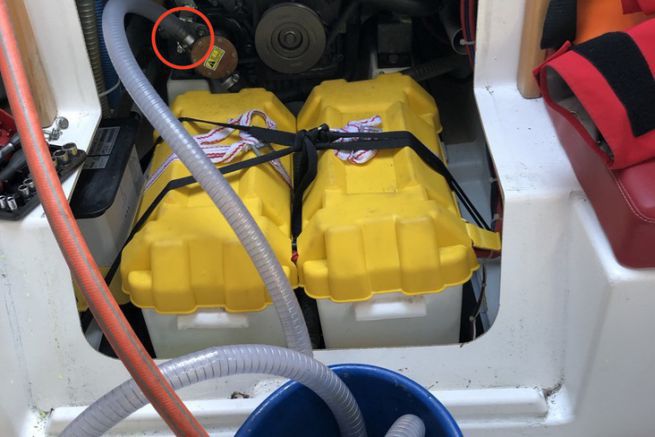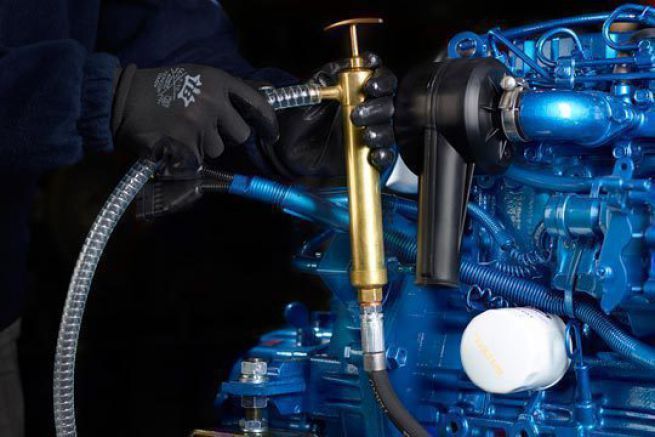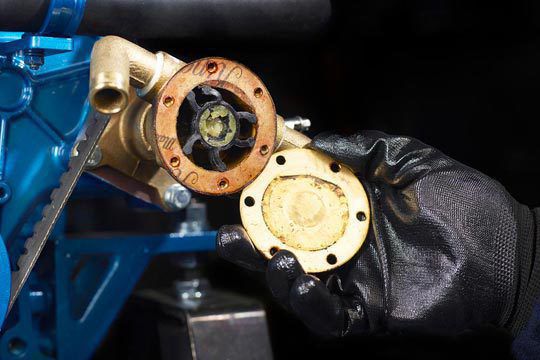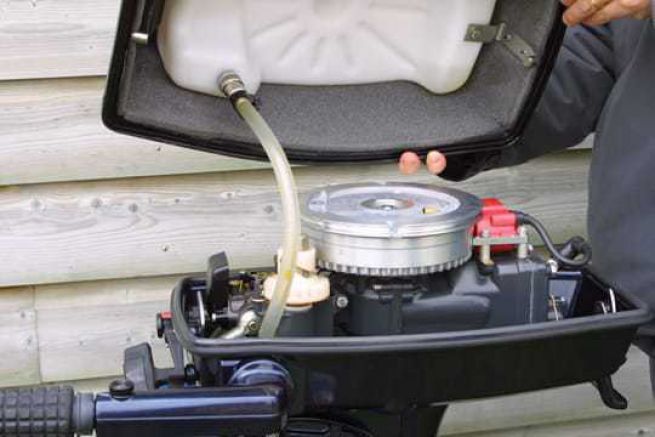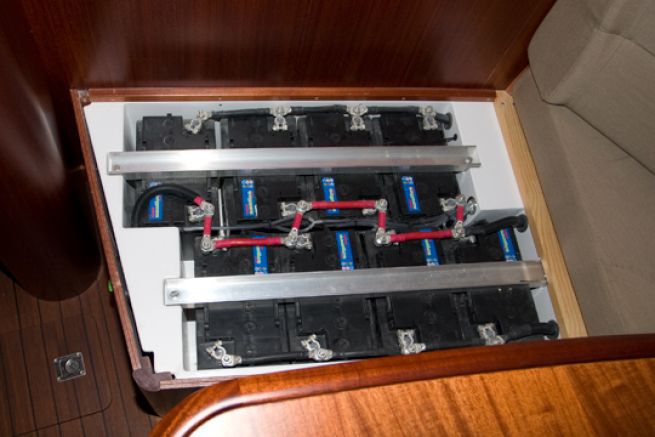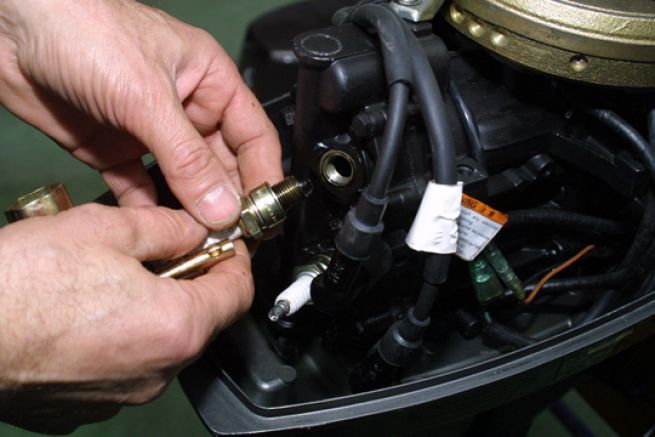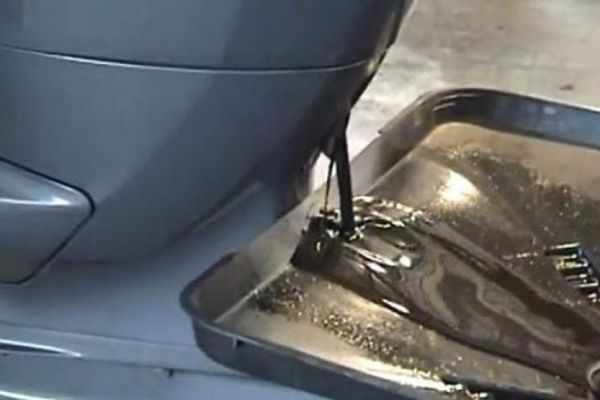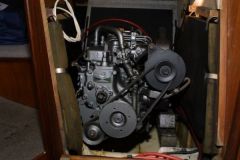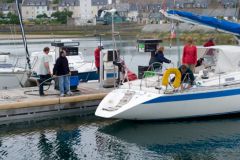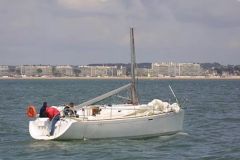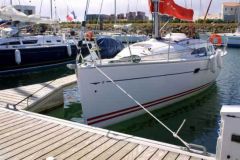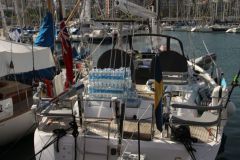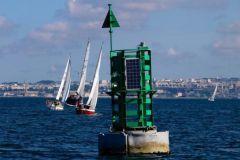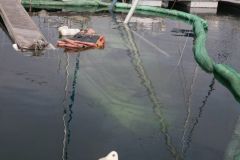The engine of a boat is not cooled with air like our car engines, but by sea water. This salt water therefore supplies a whole cooling system that is essential for the proper functioning of the engine.
This circuit requires a turbine that must be checked every year and changed every 2 years. Feel free to read our articles on the subject How to replace the impeller of a motor water pump? - Check the water pump of your motor in board
Step 1: Empty the seawater from the circuit
We start by running the engine for a few seconds to empty the water remaining in the circuit outside the boat. This ensures that it does not empty inside the boat... we take advantage of this to control the evacuation of water...

Step 2: Dismantle the water inlet
Locate the water pump and unscrew the water inlet pipe.
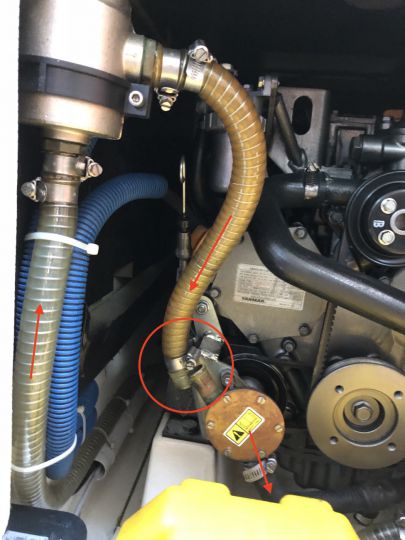
Step 3: Rinse the cooked product with fresh water
Install a hose (usually 19 mm) on the water inlet of the pump. The other end is drowned in a bucket, continuously supplied with fresh water (the red garden hose in our photo). This method controls the flow rate of the water according to its water supply and engine speed. We turn the engine back on and monitor the water flow. Do not hesitate to keep the operation going for at least 30 minutes... to rinse the circuit and dissolve the salt.
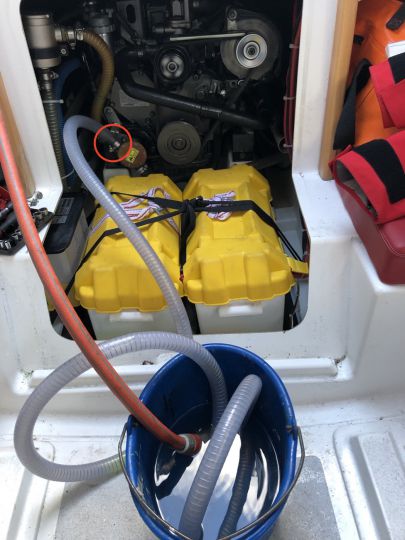
Step 4: Remove the salt
It is interesting to add a little anti-salt to speed up the removal of salt. The waste water must then foam slightly.
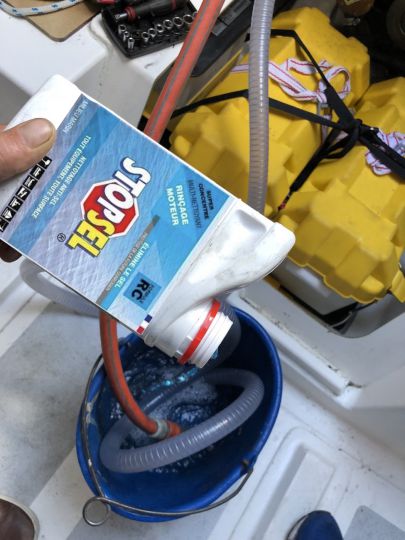
Step 5: Fill the circuit with antifreeze
To complete the cycle, replace fresh water with antifreeze coolant. It is not a question of rinsing the circuit with it, but that it occupies the entire circuit to protect it during the winter. Do not hesitate to put a bucket in to collect any liquid that may escape before shutting down the engine... it is a polluting product.
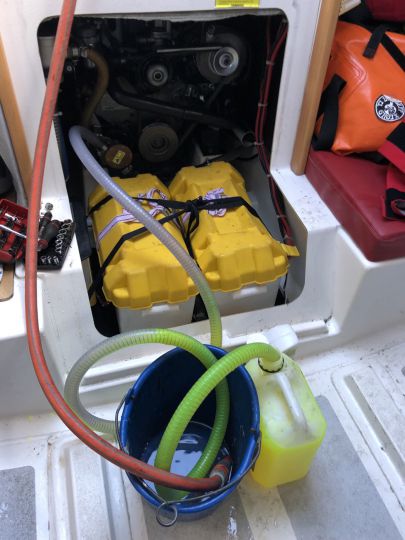
Step 6: Protect the evacuation of wasps and other insects.
Simply by using an old cloth.
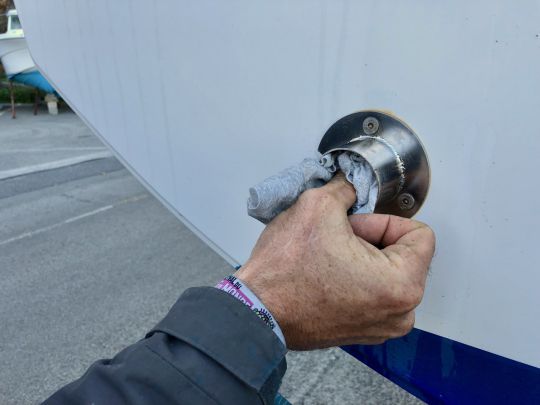
Step 7: Rinse the water supply
Take the opportunity to rinse the water supply. Since this part does not have a pump, immerse your fresh water inlet pipe into the pipe previously attached to the pump. Let it run for a few minutes.
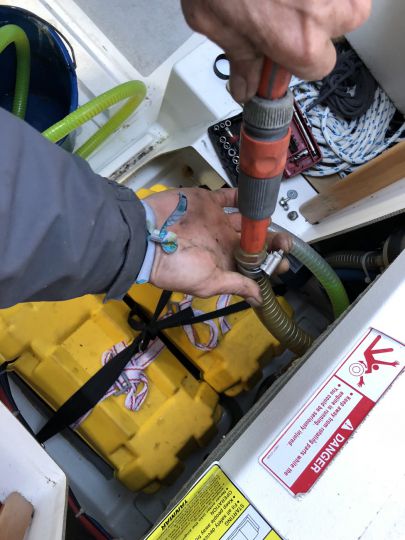
Step 8: Monitor the correct flow
Check that the water circulates abundantly.
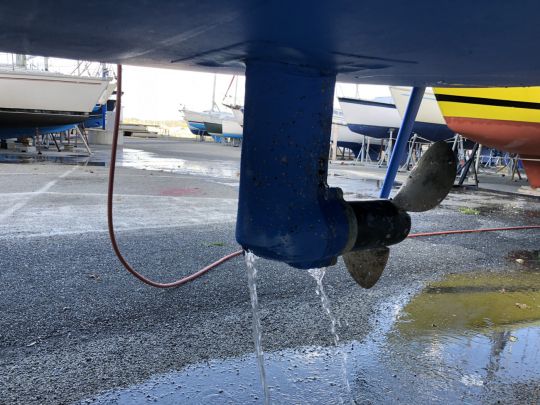
Step 9: Slacken the belt
Finally, the last step is to slightly stretch the belt so that it does not remain under tension all winter long
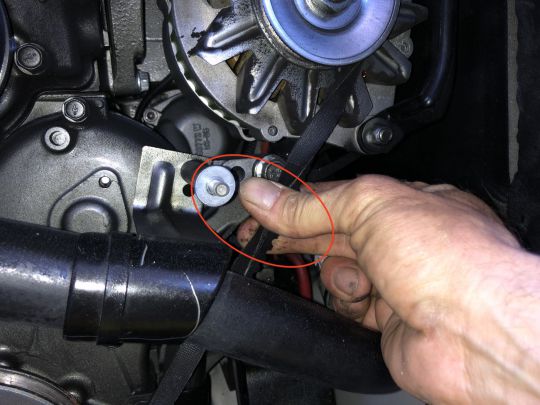
If you have any tips and tricks to share with us, feel free to enrich this article with your comments. Thanks to Erwan from BDM.

 /
/ 